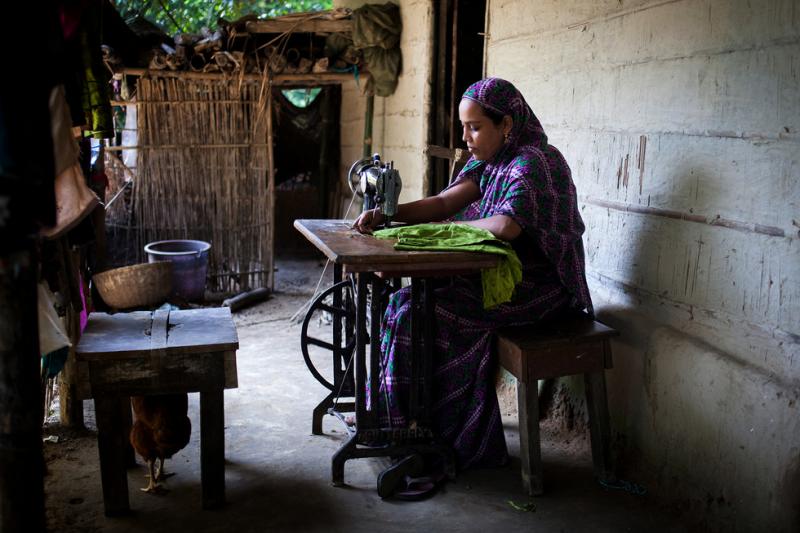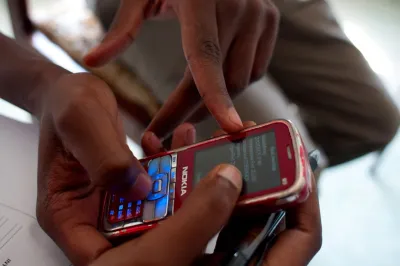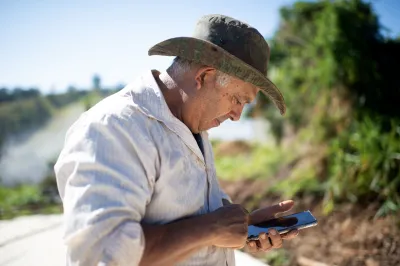What Could Digital Finance Look Like in 10 Years?
CGAP advocates for a world where digital finance helps increase access to financial services the poor need to improve their lives. But what could a digitally-powered, financially-inclusive world look like? To illustrate our vision for what might be possible in the future, consider the fictional case of “Wanda,” living in “Afrinia:”
Born to impoverished parents, Wanda is an aspiring seamstress who lives in a remote island of the digitally advanced island country of Afrinia. She recently purchased a $30 Chinese smartphone, which has been flooding the Afrinia market.
As a single mother of two young children, Wanda understands the importance of savings, loans and insurance to keep her family secure, and decides to open a bank account. She takes a picture of her face using her phone camera and also takes pictures of relevant documentation, which she texts to the bank. The bank uses a national biometric database that images and pattern matches the blood vessels in the whites of Wanda’s eyes, before approving her registration and opening the account within 30 minutes.

Photo Credit: Mohammad Saiful Islam, 2014 CGAP Photo Contest
Wanda applies for a loan to purchase three state of the art sewing machines, for her as well as two friends that will help her with the new business. Since Wanda has been a regular member of her village savings group, in which all transactions were digitized and pooled in a mobile money account that earns interest, the bank decides to top her up with additional capital based on her digitized group savings activities, mobile money transactional patterns and airtime usage tracked by her mobile operator over the last two years.
With the new loan, she heads to the closest retailer to buy sewing machines, but finds out that the merchant only accepts cash, and it will be expensive for Wanda to travel to the next island to cash out the loan she just received. So she downloads a banking application on her smartphone to borrow cash from someone a street away, while transferring an equivalent amount of electronic credit to his mobile money account.
Keeping up with repaying the loan has been really easy. The bank customized Wanda’s loan to include bi-weekly repayments that are a small proportion of the remittances she receives from her brother who lives abroad, and she can access loan status and make quick repayments through a fast, intuitive and personalized user interface. The bank also offers Wanda an automated personal financial advisor, who texts Wanda when these payments occur and discusses with her if further loan adjustments are required to cater to the peculiar needs of Wanda’s changing business and financial situation. While her business grows, Wanda knows she needs to also protect her household from risk. So she downloads a home insurance mobile application from a local insurance provider, which tracks her household’s usage of solar power, water and other essential utilities in her home. This has enabled a greatly reduced home insurance premium based on her household’s usage over time. Without such affordable insurance, she would not have risked putting all her savings into upgrading her home, which she simultaneously uses to operate her growing business.
New CGAP global landscape research on frontier innovations in digital financial services indicates that the Afrinian market for digital financial services may not be too far from reality. CGAP has identified 108 live deployments that enhance digital delivery models for financial services worldwide, through experimenting with six key attributes of digital channels that have not yet been fully leveraged to their potential: digital data trails, real time customer interactions, P2P social connections, smart and rich user interface, instant verification and remote sensing.
While most identified deployments are early stage, the fact that organizations are already experimenting with these attributes as part of their core business clearly suggests a promising future for digital financial services, in which frontier innovations might lead to operationalizing a new class of products and services on digital channels that tie more meaningfully to people’s lives. There are however a number of challenges that first need to be addressed, through concerted stakeholder commitment, new partnership models, deeper customer understanding and improved regulatory environments in countries with large percentages of financially underbanked populations:
- Digital channels offer new opportunities to engage with customers, but most are only beginning to be explored. There is a high degree of experimentation – and failure – in which entrepreneurs attribute a wide range of challenges, including many that are part of the enabling commercial and regulatory environment.
- Many innovations currently do not target low-income people, require capabilities mostly found in smartphones, and often require a bank account. However, they explore aspects that if successful may have direct impact opportunities that bring tailored digital financial services to poor people.
- There may not be sufficient smartphone penetration rates in a developing country, which is vital to many of these innovations because they help such products proliferate more quickly by strengthening the business case to reach new customer segments.
With more advancement in this sector, we might finally imagine a world where location, literacy and even proof of identity no longer hinder peoples’ ability to manage their financial lives.




Comments
In Kenya, the above is a
In Kenya, the above is a reality. With Mpesa and mswhari and others like it, the poor can open bank accounts, save borrow, repay and make other business transactions seamlessly.
Add new comment